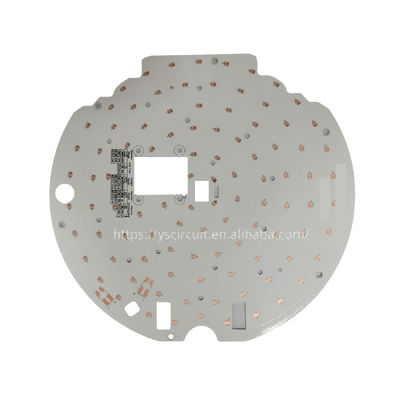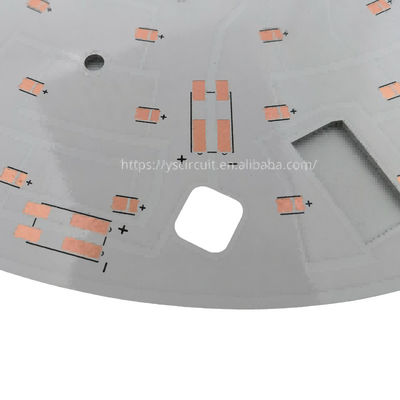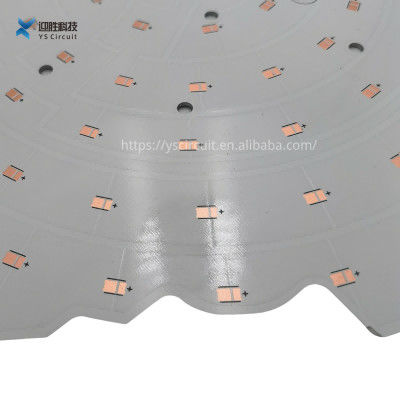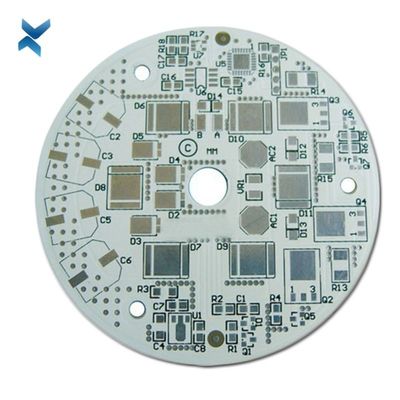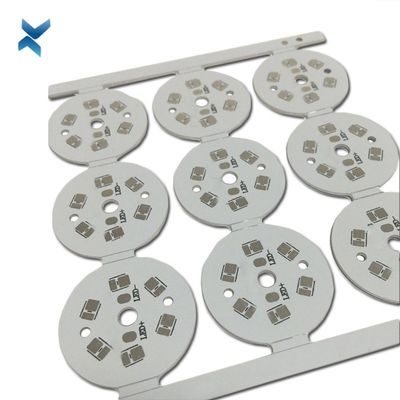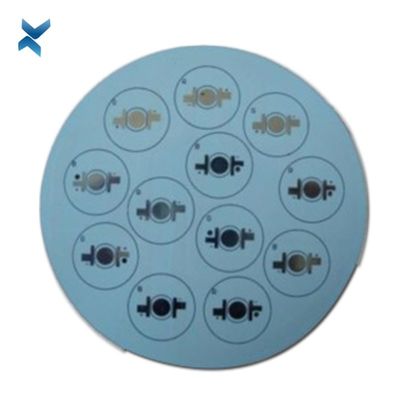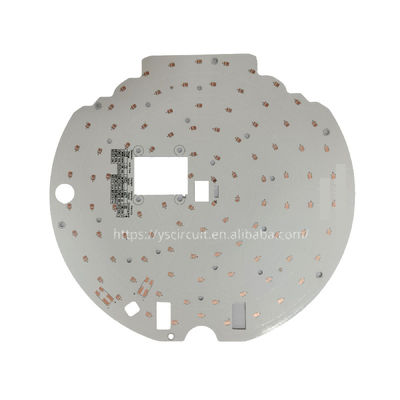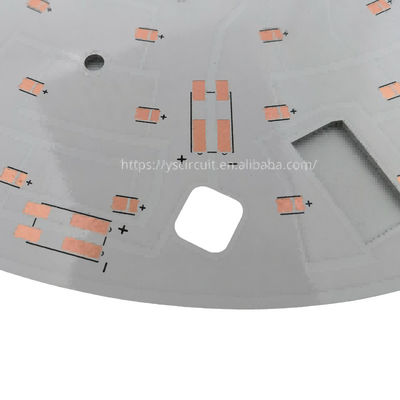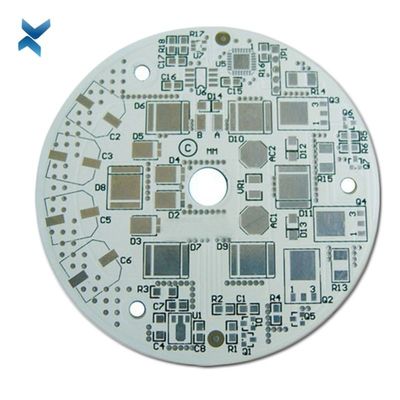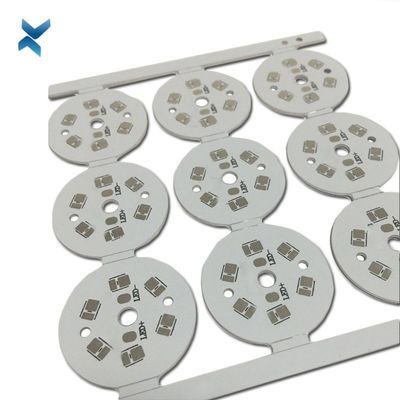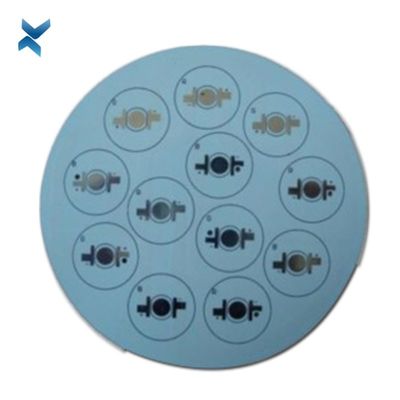Metal Core Aluminum PCB Circuit Board For Led Light ISO9001 Certified
| Place of Origin | Shenzhen |
|---|---|
| Brand Name | YScircuit |
| Certification | ISO9001,UL,REACH, RoHS |
| Model Number | YS-AL-0001 |
| Minimum Order Quantity | 1 piece |
| Price | 0.03-6$/piece |
| Packaging Details | Foam cotton + carton + strap |
| Delivery Time | 2-8 days |
| Payment Terms | T/T,PayPal, Alibaba pay |
| Supply Ability | 251,000 square meter/year |

Contact me for free samples and coupons.
Whatsapp:0086 18588475571
Wechat: 0086 18588475571
Skype: sales10@aixton.com
If you have any concern, we provide 24-hour online help.
x| Material | Aluminum | Size | According To Customer Request |
|---|---|---|---|
| Process | Immersion Gold/sliver | Surface Finishing | HASL//ENIG/OSP |
| High Light | Metal Core Aluminum PCB Circuit Board,Led Aluminum PCB Circuit Board,ISO9001 Led PCB Circuit Board |
||
High Power Aluminum Pcb, Led Metal Core Print Circuit Boards for Led Light
Advantages and Disadvantages of Aluminum PCB
Aluminum boards are one of the most thermally conductive PCB options. They keep as much heat away from vital components as possible to ensure minimal circuit damage. Thanks to their high heat tolerance, they can handle higher density circuits and larger power levels. Substrates created from aluminum alloys have a high level of physical durability that lowers the risk of breakage. Compared to other metals, aluminum has a lower environmental impact in addition to a reasonable cost.
On the other hand, aluminum PCBs tend to have more niche uses than standard boards. While they cost less than adding conductors to a copper board, they have a higher price than standard PCBs without those components. Investing in an aluminum core may not pay off if your application doesn’t involve high temperatures. If you plan on creating a flex circuit, an aluminum flex PCB can only flex into its initial position. It will bend to fit into smaller electronics, but it won’t withstand the stress of vibration.
Performance of Aluminum PCB
1. Thermal Dissipation
Common PCB substrates, such as FR4, CEM3 are poor conductors of thermal.
If the heat of electronic equipments cannot be distributed in time, it will result in high temperature failure of electronic components.
Aluminum substrates can solve this thermal dissipation problem.
2. Other Performance
Aluminum substrate printed circuit board has shielding effect, and can alternative brittle ceramic substrate.
Aluminum substrate also helps to improve the heat resistance and physical properties and reduce production costs and labor.
| YS Aluminum PCB manufacturing capabilities overview | |
| Feature | capabilities |
| Layer Count | 1-4L |
| Thermal Conductivity(w/m.k) | Aluminum PCB:0.8-10 |
| Copper PCB:2.0-398 | |
| Board Thickness | 0.4mm-5.0mm |
| copper Thickness | 0.5-10OZ |
| Minimum line Width and Space | 0.1mm/0.1mm(4mil/4mil) |
| Speciality | Countersink,Counterbore drilling.etc. |
| Types of Aluminum Substrates | 1000 series;5000 series;6000 series,3000 series.etc. |
| Min mechanical Drilled Size | 0.2mm(8mil) |
| Surface Finish | HASL, Lead free HASL,ENIG,Immersion Tin, OSP, Immersion Silver, Gold Finger, Electroplating Hard Gold, Selective OSP,ENEPIG.etc. |
| Solder Mask | Green, Red, Yellow, Blue, White, Black, Purple, Matte Black, Matte green.etc. |
| layer/m² | S<1㎡ | S<3㎡ | S<6㎡ | S<10㎡ | S<13㎡ | S<16㎡ | S<20㎡ | S<30㎡ | S<40㎡ | S<50㎡ | S<65㎡ | S<85㎡ | S<100㎡ |
| 1L | 4wds | 6wds | 7wds | 7wds | 9wds | 9wds | 10wds | 10wds | 10wds | 12wds | 14wds | 15wds | 16wds |
| 2L | 4wds | 6wds | 9wds | 9wds | 11wds | 12wds | 13wds | 13wds | 15wds | 15wds | 15wds | 15wds | 18wds |
| 4L | 6wds | 8wds | 12wds | 12wds | 14wds | 14wds | 14wds | 14wds | 15wds | 20wds | 25wds | 25wds | 28wds |
| 6L | 7wds | 9wds | 13wds | 13wds | 17wds | 18wds | 20wds | 22wds | 24wds | 25wds | 26wds | 28wds | 30wds |
| 8L | 9wds | 12wds | 15wds | 18wds | 20wds | 20wds | 22wds | 24wds | 26wds | 27wds | 28wds | 30wds | 30wds |
| 10L | 10wds | 13wds | 17wds | 18wds | 20wds | 20wds | 22wds | 24wds | 26wds | 27wds | 28wds | 30wds | 30wds |
| 12L | 10wds | 15wds | 17wds | 18wds | 20wds | 20wds | 22wds | 24wds | 26wds | 27wds | 28wds | 30wds | 30wds |
| 14L | 10wds | 16wds | 17wds | 18wds | 20wds | 20wds | 22wds | 24wds | 26wds | 27wds | 28wds | 30wds | 30wds |
| 16L | 10wds | 16wds | 17wds | 18wds | 20wds | 20wds | 22wds | 24wds | 26wds | 27wds | 28wds | 30wds |
30wds |
Aluminum PCB is one of the most widely used metal core PCBs, also called as MC PCB, aluminum-clad, or insulated metal substrate, etc.
The base structure of the aluminum PCB has no much different from other PCBs.
Such a construction makes the circuit board an excellent electrical insulator and thermal conductor.
Usually, aluminum PCB includes four layers: a substrate layer (aluminum layer), a dielectric layer (insulating layer), a circuit layer (copper foil layer), and an aluminum base membrane (protective layer).
One such capability that we are going to discuss in this article is "Aluminum PCB."
If you want to know more about Aluminum PCB, keep yourself glued to this article till the very end.
![]()
![]()
![]()
![]()
![]()
WHAT IS AN ALUMINUM PCB?
A PCB generally consists of three layers. A conductive copper layer at the top, a dielectric layer in between, and a layer of a substrate at the bottom. Standard PCBs have a substrate layer made of fiberglass, ceramic, polymers, or any other non-metal core. An ample amount of PCBs uses FR-4 as the substrate.
Aluminum PCBs use an Aluminum substrate. Instead of standard FR-4 as the substrate material.
Circuit Copper Layer
This layer transmits signals over the entire PCB board.
The movement of charged particles generates heat.
This heat is transferred to the Aluminum substrate. Which dissipates it efficiently.
Insulating Layer
This layer is also known as the dielectric layer.
It is made of materials that are poor conductors of electricity.
It absorbs the heat generated in the above layer. And transfer it to the Aluminum substrate below it.
Substrate
The substrate acts as a foundation for the PCB.
It firmly holds the components above it. By changing the characteristics of the substrate, the performance of PCB varies.
For example, a rigid substrate provides strength and durability to the PCB board.
While a flexible substrate opens up more design options.
The aluminum substrate is used in power electronics-based applications where high thermal dissipation is required.
Due to its good thermal conductivity, it keeps heat away from vital electronic components. Thus ensuring minimal circuit damage.
ALUMINUM PCBs MANUFACTURED AT YScircuit
YScircuit is one of the finest manufacturers of Aluminum PCBs.
To increase the overall performance of the product, they provide a thermal clad layer to the Aluminum PCB.
It dissipates heat in a highly efficient manner. For high power and tight tolerance based applications Aluminum Backed PCB is the perfect choice among project makers.
Considering parameters like the coefficient of thermal expansion, thermal conductivity, strength, hardness, weight, and cost. Aluminum plate is an ideal choice for your project. You can modify your PCB substrate. PCBWay offers different Aluminum plates like 6061, 5052, 1060, and many more.
ADVANTAGES OF ALUMINUM PCB
1. The heat dissipation capacity of Aluminum PCBs is far better than standard PCBs.
2. Aluminum PCBs provide more strength and durability. As compared to ceramic and fiberglass-based PCBs.
3. It seems ironic, but aluminum-based PCBs are lighter. As compared to standard PCBs.
4. Thermal expansion and contraction of PCB components get reduce by using Aluminum PCB.
5. PCBs made of Aluminum are environmentally friendly. It is non-toxic and recyclable. It does not create any harmful impacts on our planet.
6. The assembling process of Aluminum PCB is easy than that of standard PCB.
APPLICATIONS
1. They are used in Power supply devices like switching regulators, DC/AC converter, SW regulator.
2. In power modules, they are used in inverters, solid-state relays, and rectifier bridges.
3. In automobiles, they are used in an electronic regulator, ignition, power supply controller, etc.
4. They are the perfect choice for amplifiers. Balanced amplifier, audio amplifier, power amplifier, operational amplifier, high-frequency amplifier.




